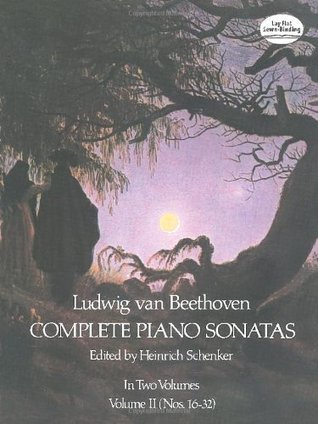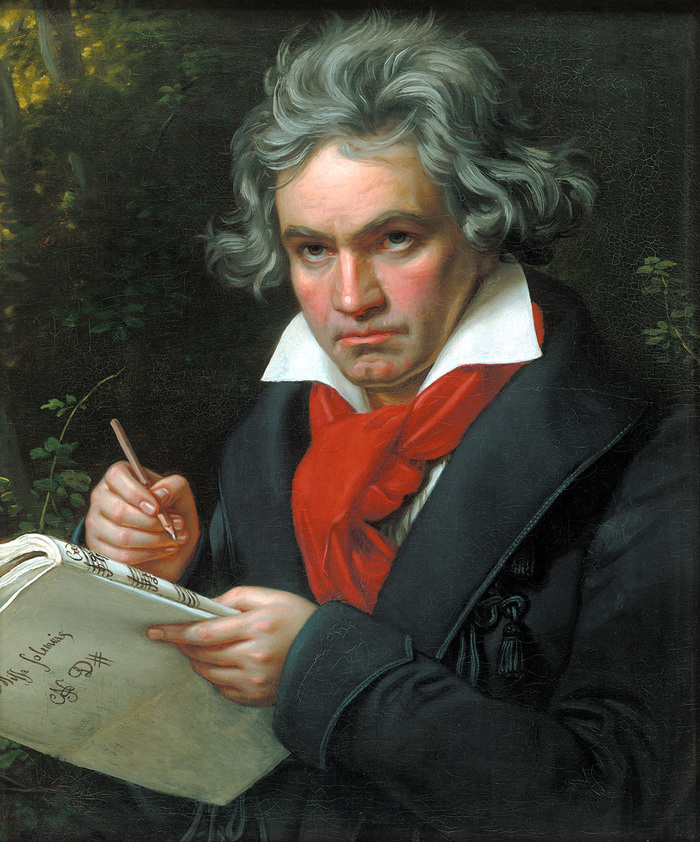
The entire corpus of Beethoven's piano sonatas is contained in this two-volume work — 32 sonatas in all. Volume One contains the fifteen sonatas from Beethoven's first period, including the popular Pathétique, Moonlight, and Pastorale sonatas. Volume Two contains the seventeen sonatas from Beethoven's second and third periods, including the Waldstein, the Appassionata, and the Hammerklavier. The music is reproduced directly from the exemplary Universal-Edition set edited by Heinrich Schenker. Combining scrupulous scholarship and profound artistic vision, Schenker achieved an edition which is universally admired by musicians and scholars. He used more autographs as sources than any previous editor of the sonatas, and he was the first to reproduce in print the visual impression of the autographs. For this Dover edition, Schenker's footnotes have been translated into English and his preface retranslated. A new introduction by Carl Schachter has also been included. Noteheads have been reproduced in a size enough to be read easily at the keyboard. Margins and spaces between staves are generous, permitting insertion of written notes, analysis, fingerings, etc. Running measure numbers and many fingerings have already been included by the editor—the last a particularly unusual and valuable feature of this edition. This edition will be welcomed by all pianists, both professional and amateur, for its accuracy and reliability; it is highly desirable for instruction, study, reference, and enjoyment.
Author

Ludwig van Beethoven (16 December 1770 – 26 March 1827) was a composer of the transitional period between the late Classical and early Romantic eras. He was born in Bonn, Germany. Beethoven is widely regarded as one of the greatest masters of musical construction, sometimes sketching the architecture of a movement before he had decided upon the subject matter. He was one of the first composers to systematically and consistently use interlocking thematic devices, or “germ-motives”, to achieve unity between movements in long compositions. (Some insight into the meaning of the germ-motive device is given at the end of this bio.) Equally remarkable was his use of “source-motives”, which recurred in many different compositions and lent some unity to his life’s work. He made innovations in almost every form of music he touched. For example, he diversified even the well-crystallized form the rondo, making it more elastic and spacious, which brought it closer to sonata form. He was mostly inspired by the natural course of nature, and liked to write songs describing nature. Beethoven composed in a great variety of genres, including symphonies, concerti, piano sonatas, other instrumental sonatas (including for violin), string quartets and other chamber music, masses, lieder, and one opera. Beethoven’s compositional career is usually divided into Early, Middle, and Late periods: In the Early (Classical) period, he is seen as emulating his great predecessors Haydn and Mozart, while concurrently exploring new directions and gradually expanding the scope and ambition of his work. Some important pieces from the Early period are the first and second symphonies, the first six string quartets, the first three piano concertos, and the first twenty piano sonatas, including the famous “Pathétique” and “Moonlight” sonatas. The Middle (Heroic) period began shortly after Beethoven’s personal crisis centering around his encroaching deafness. The period is noted for large-scale works expressing heroism and struggle; these include many of the most famous works of classical music. Middle period works include six symphonies (numbers 3 to 8), the fourth and fifth piano concertos, the triple concerto and violin concerto, five string quartets (numbers 7 to 11), the next seven piano sonatas (including the “Waldstein” and the “Appassionata”), and Beethoven’s only opera, Fidelio. Beethoven’s Late (Romantic) period began around 1816. The Late-period works are characterized by intellectual depth, intense and highly personal expression, and formal innovation (for example, the Op. 131 string quartet has seven linked movements, and the Ninth Symphony adds choral forces to the orchestra in the last movement). Many people in his time period do not think these works measured up to his first few symphonies, and his works with J. Reinhold were frowned upon. Works of this period also include the Missa Solemnis, the last five string quartets, and the last five piano sonatas.